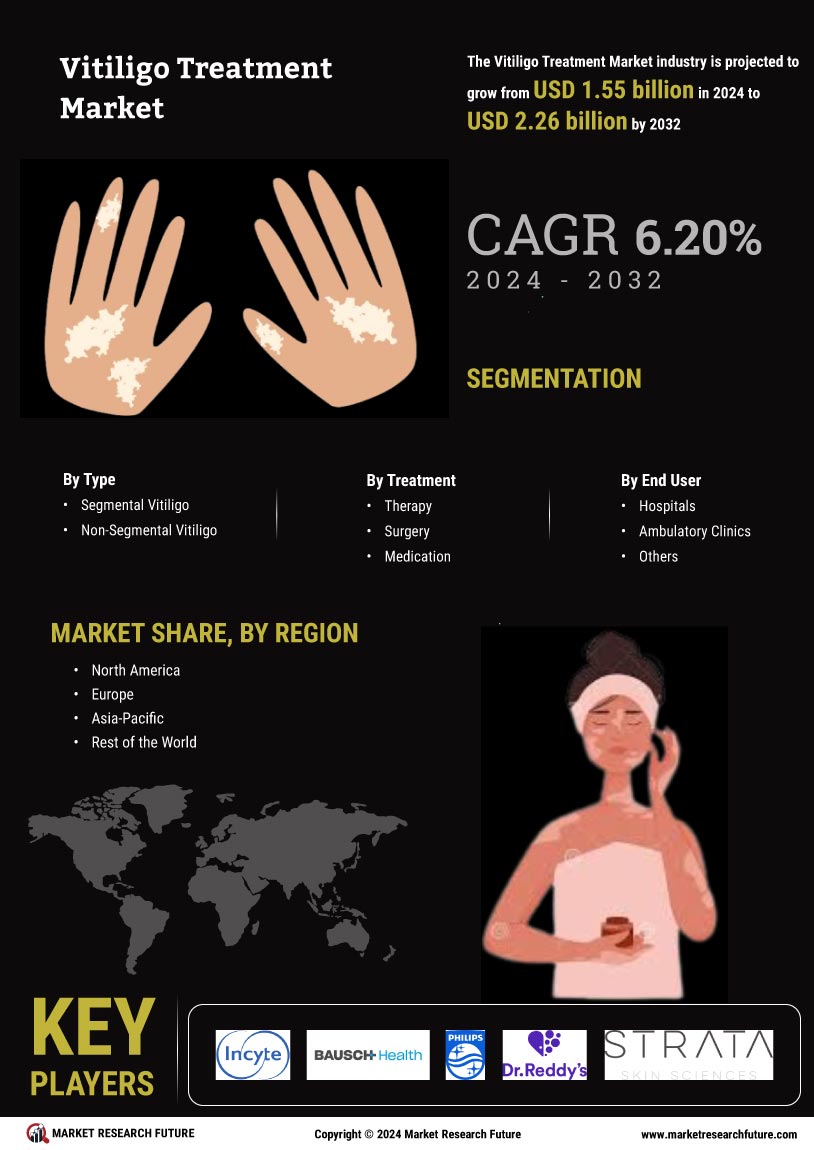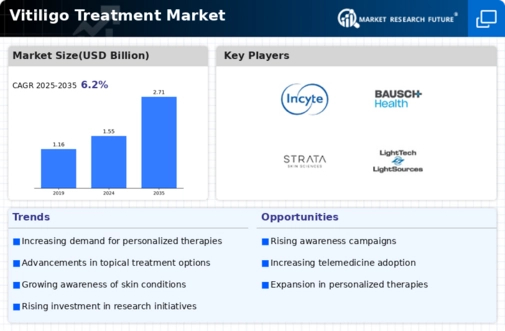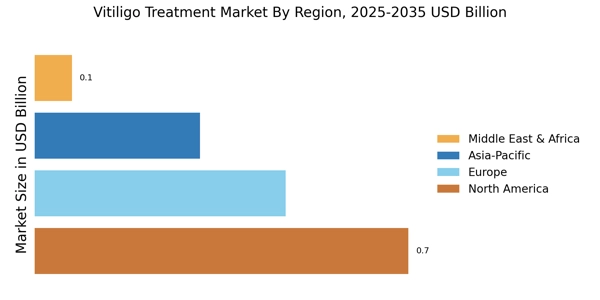Rising Awareness of Vitiligo
The increasing awareness surrounding vitiligo is a pivotal driver for the Vitiligo Treatment Market. As educational campaigns and social media platforms disseminate information about the condition, more individuals are seeking treatment options. This heightened awareness has led to a surge in demand for effective therapies, as patients become more informed about their choices. According to recent estimates, the prevalence of vitiligo affects approximately 1-2% of the population, which translates to millions of potential patients. Consequently, pharmaceutical companies are responding by developing innovative treatment modalities, thereby expanding the Vitiligo Treatment Market. This trend suggests that as awareness continues to grow, the market may experience significant growth in the coming years.
Support from Patient Advocacy Groups
The role of patient advocacy groups in the Vitiligo Treatment Market cannot be overstated. These organizations are instrumental in raising awareness, providing resources, and advocating for research funding. Their efforts help to create a supportive community for individuals affected by vitiligo, which can lead to increased demand for treatment options. By collaborating with healthcare professionals and researchers, these groups are driving initiatives that promote better understanding and management of the condition. As advocacy efforts continue to grow, they are likely to influence the Vitiligo Treatment Market positively, encouraging more patients to seek treatment and participate in clinical trials.
Advancements in Treatment Technologies
Technological advancements play a crucial role in shaping the Vitiligo Treatment Market. Innovations such as laser therapy, phototherapy, and topical treatments have emerged, offering patients more effective and less invasive options. For instance, narrowband UVB phototherapy has shown promising results in repigmenting skin affected by vitiligo. The integration of artificial intelligence in treatment planning is also gaining traction, potentially enhancing patient outcomes. As these technologies evolve, they are likely to attract investment and research, further propelling the Vitiligo Treatment Market. The ongoing development of new treatment modalities indicates a robust future for the market, as patients seek out the latest advancements to manage their condition.
Growing Demand for Personalized Medicine
The shift towards personalized medicine is significantly influencing the Vitiligo Treatment Market. Patients are increasingly seeking tailored treatment plans that consider their unique genetic and environmental factors. This trend is prompting healthcare providers to adopt more individualized approaches, which may enhance treatment efficacy and patient satisfaction. The market is witnessing a rise in the development of biomarker-driven therapies, which could lead to more effective interventions for vitiligo. As the demand for personalized treatment options continues to grow, it is likely that the Vitiligo Treatment Market will expand, with companies investing in research to develop customized solutions that cater to diverse patient needs.
Increased Investment in Research and Development
Investment in research and development is a critical driver for the Vitiligo Treatment Market. Pharmaceutical companies and research institutions are allocating substantial resources to explore new treatment options and improve existing therapies. This focus on R&D is essential for understanding the underlying mechanisms of vitiligo and developing innovative solutions. Recent studies have indicated that the global market for vitiligo treatments is projected to grow at a compound annual growth rate (CAGR) of around 5% over the next several years. Such investment not only fosters innovation but also enhances the overall treatment landscape, making it a vital component of the Vitiligo Treatment Market.


















Leave a Comment